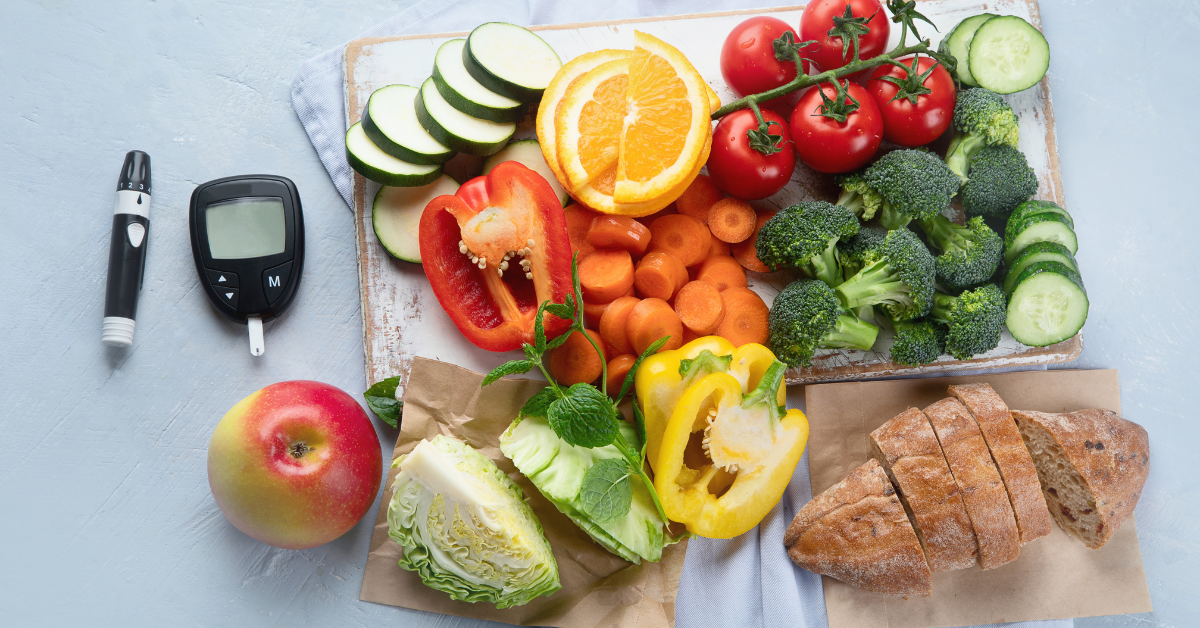A healthy plate is one of your strongest tools for managing diabetes. Learn which foods stabilize blood sugar and which ones spike it.
Diabetes management isn’t just about medication — it starts in your kitchen. What you eat directly impacts your blood sugar, energy, weight, and long-term health. The good news? You don’t have to follow a strict diet or give up all your favorite foods. The key is balance, portion control, and smart swaps.
Here’s what to focus on — and what to limit — when building a diabetes-friendly plate.
🥦 Eat More: Non-Starchy Vegetables
Leafy greens, broccoli, peppers, cucumbers, and cauliflower are all low in carbohydrates and rich in fiber, which helps slow down sugar absorption.
💡 Pro tip: Fill half your plate with non-starchy vegetables at lunch and dinner. The fiber in these veggies supports gut health too.
🍠 Eat in Moderation: Whole Grains & Starchy Foods
Whole grains like brown rice, quinoa, oats, and sweet potatoes raise blood sugar more slowly than white rice or bread—but portion size matters.
👀 What to watch: Stick to ½ cup of cooked grains or starchy veggies per meal.
🗒️ Note: Avoid large servings of white rice, pasta, or fried doughs—they can cause spikes.
🍓 Enjoy Often: Berries and Low-Glycemic Fruits
Fruits like berries, apples, and pears have fiber and antioxidants. Just be mindful of quantity and pair them with protein or fat to slow sugar absorption.
🤝 What helps: A handful of berries with Greek yogurt or peanut butter.
🚫 Avoid: Fruit juices, dried fruits, and canned fruits in syrup.
🍗 Prioritize: Lean Protein
Chicken, fish, tofu, legumes, and eggs help stabilize blood sugar and keep you full longer. Protein slows the digestion of carbs and supports muscle health.
🐠 Try this: Grilled fish with steamed greens and lentils.
👀 Watch for: Fried meats or those in sugary marinades.
🥤 Avoid: Sugary Drinks and Ultra-Processed Foods
Sodas, energy drinks, sweet teas, and even some “healthy” smoothies can cause sudden blood sugar spikes. So can highly processed snacks like chips, pastries, and white bread.
🔁 Swap with: Water, herbal teas, or sparkling water with lemon.
💬 Tip: Always read labels: “low fat” doesn’t always mean healthy.
🥑 Add Healthy Fats (in Moderation)
Avocados, nuts, seeds, and olive oil support heart health and keep you satisfied. Just watch portion sizes, since fats are calorie-dense.
💡 Pro tip: Sprinkle a few walnuts on your salad or blend avocado into your smoothie.
🚫 Avoid: Trans fats found in processed baked goods and margarine.
🍽️ You Don’t Need a Special Diet — Just a Smarter Plate
Eating well with diabetes doesn’t mean restriction — it means intention. With a little planning, your meals can be both blood sugar–friendly and delicious.
📞 Call (242) 702-9310 to book a nutrition consultation or diabetes wellness check with Nurse Anita Cates.

